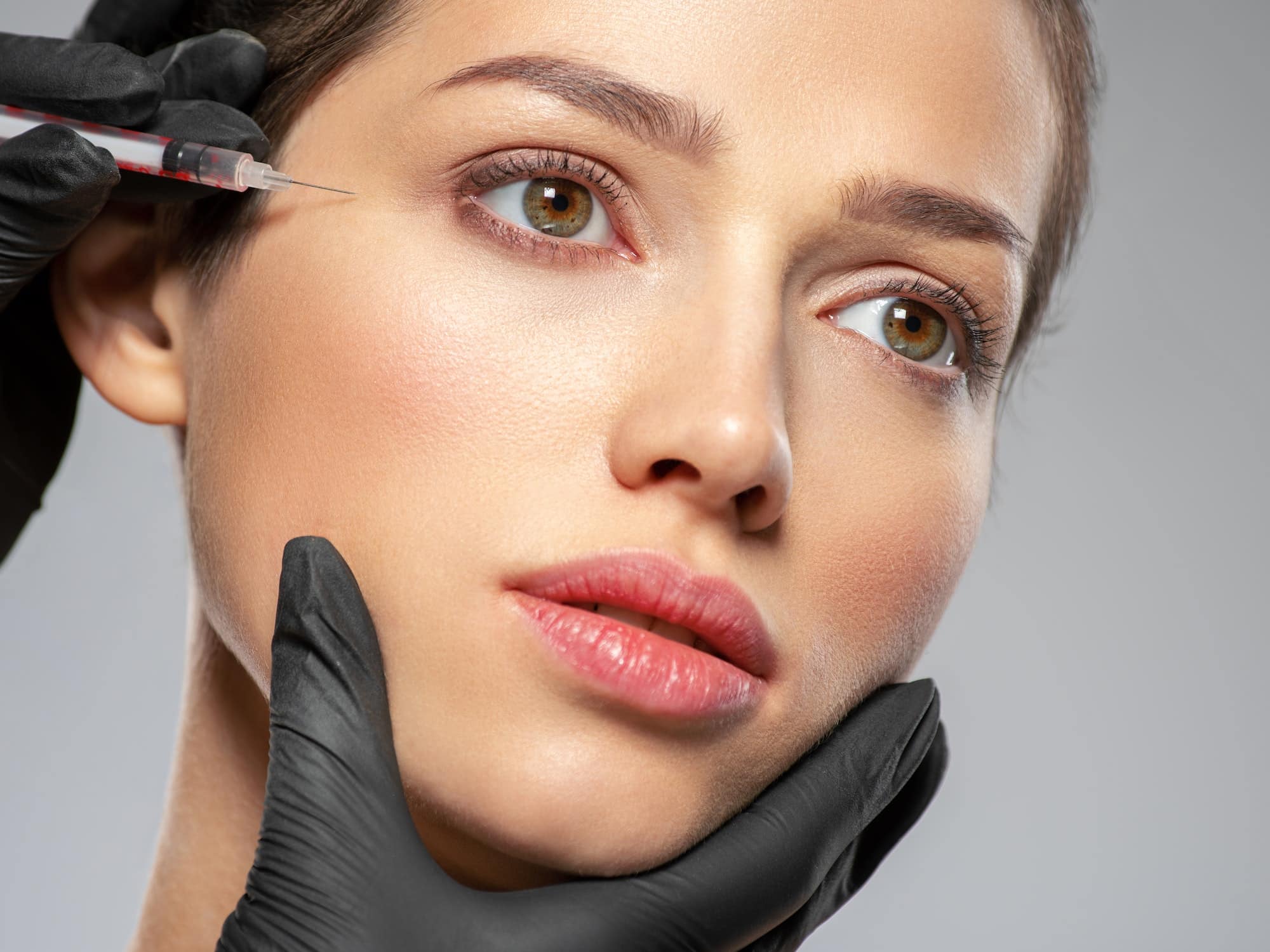Botox vs Fillers: Which is Right for You?
Botox vs Fillers: Understanding the Differences and Choosing the Right Treatment
Aging is a natural process, but the visible signs—wrinkles, fine lines, and volume loss—often leave many searching for ways to restore a youthful, refreshed look. Botox and dermal fillers are two of the most popular non-surgical cosmetic treatments for facial rejuvenation. While both are designed to combat the effects of aging, they work in fundamentally different ways.
Understanding the differences between Botox and fillers, their benefits, risks, and best applications is crucial in making an informed decision about which treatment is right for you. Whether you want to smooth fine lines, restore volume, or enhance facial contours, this guide will help you navigate the options and find the best approach to achieve natural, long-lasting results.

What is Botox and How Does it Work?
Botox is a brand name for botulinum toxin type A, a purified neurotoxin that temporarily relaxes facial muscles by blocking nerve signals. It is primarily used to treat dynamic wrinkles, which are formed by repetitive muscle movements, such as frowning, squinting, or raising the eyebrows.
By reducing muscle activity, Botox smooths existing wrinkles and prevents new ones from forming. The treatment is quick, requires minimal downtime, and typically starts showing results within 3 to 7 days, with full effects visible in about two weeks. The results usually last between three to four months, after which follow-up treatments are needed to maintain the look.
Botox is most effective for treating wrinkles caused by muscle movement in the upper face. Common areas treated include forehead lines, frown lines (glabellar lines) between the eyebrows, crow’s feet around the eyes, and bunny lines on the nose. It can also be used for a lip flip, a subtle enhancement to the upper lip.
Beyond cosmetic use, Botox is FDA-approved for medical conditions such as migraines, excessive sweating (hyperhidrosis), and temporomandibular joint (TMJ) disorders.
What are Dermal Fillers and How Do They Work?
Unlike Botox, which relaxes muscles, dermal fillers restore volume and plump up areas of the face that have lost fat, collagen, or elasticity due to aging. Most fillers are made from hyaluronic acid (HA), a naturally occurring substance in the skin that retains moisture and adds plumpness. Other types of fillers include calcium hydroxylapatite, poly-L-lactic acid, and polymethyl methacrylate (PMMA), each offering different longevity and benefits.
Fillers provide immediate results, and depending on the type used, they can last anywhere from 6 months to 2 years before naturally breaking down.
They are most commonly used in the lower and mid-face to address volume loss and deep wrinkles. Popular treatment areas include the cheeks to restore lost fullness, nasolabial folds (lines running from the nose to the mouth), marionette lines (lines extending from the mouth to the chin), and lips to enhance volume and shape. Fillers can also be used for jawline and chin contouring, under-eye hollows, and non-surgical nose reshaping.
What is the Difference Between Botox and Facial Fillers?
While both Botox and fillers are injectable treatments used for facial rejuvenation, they serve different purposes.
Botox primarily targets wrinkles caused by muscle movement (dynamic wrinkles), such as those on the forehead and around the eyes. By relaxing the muscles, it prevents the formation of new wrinkles while smoothing existing ones. However, it does not add volume or address sagging skin.
Dermal fillers, on the other hand, restore lost volume and smooth static wrinkles, which are caused by a decrease in collagen, fat, and elasticity rather than muscle movement. They plump up sunken areas, define facial contours, and enhance features such as the lips and cheeks.
Another key difference is the longevity of results. Botox results typically last 3 to 4 months, requiring more frequent maintenance, while dermal fillers can last anywhere from 6 months to 2 years, depending on the type used.
Additionally, Botox treatments usually take 10 to 20 minutes, with minimal downtime and slight swelling or redness. Fillers, depending on the area treated, may take 30 to 45 minutes and can result in temporary swelling or bruising for a few days.
What are the Side Effects and Risks of Fillers and Botox?

Both Botox and fillers are FDA-approved and considered safe when performed by a trained and experienced provider. However, as with any cosmetic procedure, side effects can occur.
Botox is generally well-tolerated, but some individuals may experience mild redness, swelling, or bruising at the injection site. Temporary side effects such as drooping eyelids (ptosis) or slight asymmetry may occur if Botox spreads beyond the intended area. These effects are rare and usually resolve on their own within a few weeks.
Fillers carry slightly different risks. Mild swelling, bruising, or tenderness at the injection site is common and usually subsides within a few days. In rare cases, lumps or unevenness can occur, which may require massage or additional adjustments. A more serious, but rare, complication is vascular occlusion, which occurs when filler is accidentally injected into a blood vessel. This underscores the importance of choosing a highly qualified injector.
Both treatments should be administered by an experienced, board-certified injector to minimize risks and achieve natural-looking results.
Choosing the Right Treatment for You
The decision between Botox and fillers depends on your specific concerns and aesthetic goals. If your primary concern is wrinkles caused by muscle movement, such as forehead lines or crow’s feet, Botox is the best choice. It effectively smooths these lines and prevents further wrinkle formation.
If you are experiencing loss of volume, sagging skin, or deep folds, dermal fillers are more suitable. They restore youthful fullness, enhance contours, and provide immediate results.
In many cases, a combination of Botox and fillers offers the most balanced, natural-looking rejuvenation. Botox can smooth wrinkles in the upper face, while fillers restore volume in the lower face, resulting in a harmonious and refreshed appearance.
The best way to determine the right approach for your needs is to schedule a consultation with a qualified aesthetic specialist, who can create a personalized treatment plan tailored to your goals.
The Emotional and Confidence-Boosting Impact
Cosmetic treatments like Botox and fillers go beyond aesthetics—they can boost self-confidence, enhance self-expression, and help individuals feel their best. Feeling comfortable in your skin is empowering, and choosing treatments that align with your personal goals can be a positive step toward self-care.
It’s essential to approach cosmetic enhancements with realistic expectations and work with a provider who prioritizes natural, subtle improvements that complement your unique features.
Need a check-up or second opinion on your health?
Speak to a Licensed Clinician Today.
Final Thoughts
Both Botox and dermal fillers are effective, non-surgical solutions for facial rejuvenation, each with distinct advantages. Botox smooths dynamic wrinkles, while fillers restore lost volume and enhance facial contours. Choosing the right treatment—or a combination of both—depends on your unique needs and goals.
If you’re considering Botox or fillers, consulting with a trusted aesthetic professional will ensure the safest and most natural-looking results. By understanding your options, you can confidently take steps toward a youthful, refreshed appearance that enhances your natural beauty.
Stay Informed: Subscribe to Our Newsletter
What Next?
You may also like…
- Botox vs Fillers: Which is Right for You?
- Injection Site for Semaglutide
- Does Laser Hair Removal Hurt?
- How to Prepare for Laser Hair Removal
- What is Replenza?
- Diabetes and Nerve Health
- Diabetes and Kidney Health
- Diabetes and Vision Health
- Benefits of Annual Physical Exams
- How Diabetes Affects Heart Health
Thanks for Reading: Share with Your Friends!
NEW PATIENT SPECIAL
$9/UNIT BOTOX
*On first 20 units of Botox
Contact Us
- 1400 Buford Hwy NE
- Sugar Hill, GA 30518
- Suite K 2
- (678) 892-9230
